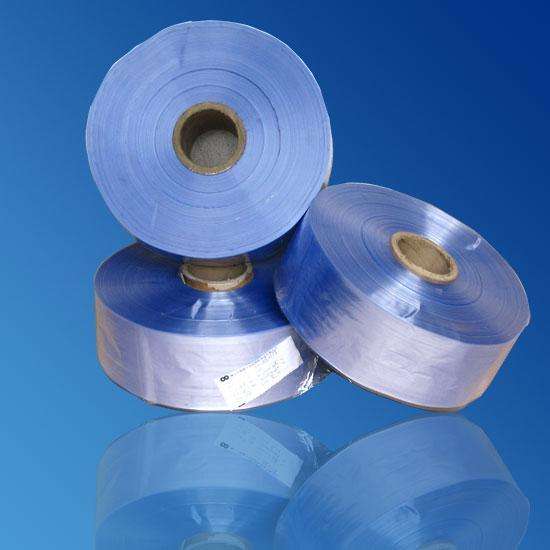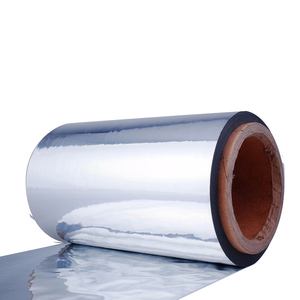Heat shrink film rolls can be a great way to insulate and protect a variety of items. Heat shrink film rolls can be the perfect solution, whether you’re looking to secure some wiring in your car or just want to add a stylish look to your phone case. But how do you use heat-shrink film rolls? Don’t worry, we’ve got you covered. Here’s a handy guide to help you get started with your heat shrink film application.
How to apply heat shrink film:
Cut the film to the correct size.
Place the object in the center of the film.
Heat the film with a heat gun or hair dryer.
Move the heat gun around the object until the film shrinks.
The next section is about heat shrink film rolls, their benefits, and a more in-depth guide on preparing and applying the film.
What is a heat shrink film roll?

Heat shrink film rolls, also known as heat shrink wrap, are a type of plastic that wraps around objects and shrinks when exposed to heat. It is commonly used for packaging products or insulation purposes. The shrinking process creates a tight seal that keeps moisture out and allows the product or material to remain secure. Heat shrink films come in various thicknesses and sizes depending on the application, allowing them to be tailored for individual needs. They can be cut into any desired shape or size and even printed for branding purposes. Heat shrink films provide an ideal solution for preserving a product’s quality during storage or transportation.
Heat shrink films are also highly versatile, as they can be used to cover irregular shapes and surfaces. Additionally, they are often used in the production of components and assemblies, enabling them to be protected from external elements. Heat shrink films are also used in a variety of other applications including protective coverings, insulation layers, and tamper-evident seals. With their flexibility, durability, and affordability, it is no surprise why these films are so popularly used by many industries today.
Benefits of using heat shrink film roll

Heat shrink film roll is an excellent choice for sealing and protecting a wide range of products. It offers superior protection against the elements, moisture, dust, and other contaminants. The film has a high tensile strength that helps to guard against tampering and provides tamper-evident protection in many applications. Additionally, it is resistant to puncture, tear, and abrasion, making it perfect for use on sharp or irregular-shaped objects. Heat shrink film also shrinks at lower temperatures than conventional plastic films, allowing better coverage with less energy consumption. Furthermore, heat shrink film can be printed with branding or product information without compromising its protective properties. In summary, using heat shrink film roll offers superior protection while being cost-effective and energy efficient. Its wide range of applications makes it an excellent choice for many packaging needs.
Heat shrink stretch film also offers increased product visibility, making it easy to identify and monitor the progress of products being shipped or stored. Its superior clarity allows for quick visual inspection, making it an ideal choice for product identification and tracking. Additionally, heat shrink film is available in a variety of sizes and textures to meet any product needs. With its superior protection and visibility, heat shrink film roll is an excellent choice for any packaging needs.
Step-by-Step Instructions for using heat shrink film roll
Preparation:
Choose a heat shrink film roll
When selecting a heat-shrink film roll, it is important to consider the desired properties of the film. Factors like thickness, strength, optical clarity, and shrinkage rates are all important considerations when selecting the right roll. Additionally, consider the width of the film roll that is necessary to complete a job correctly. Too narrow of a film roll may not be able to cover entire surfaces adequately and too wide may result in wasted material. It is also essential to select a heat shrink film with reliable effects over time; for example, temperature resistance and UV radiation protection should be ensured for long-lasting performance. With these components taken into account, it is possible to choose the most suitable heat shrink film rolls for any application.
Prepare the item to be wrapped
If you are using a heat shrink film roll to wrap an item, it is important to take the necessary steps to ensure that the item is properly prepared. First, thoroughly clean the item you are wrapping to ensure that no dirt or debris is present before wrapping it in the heat shrink film roll. Make sure that any embossed text and other decorative elements are in good condition before beginning. Next, use a soft cloth to dry off any remaining moisture on the item, as this could cause issues with the proper adhesion of the film to the item. Lastly, you should make sure that any areas where wrinkles or creases will form have been smoothed out before wrapping them in the film roll. Following these preparation steps will help ensure that your item is properly wrapped using a shrink film helps and will provide a professional-looking result.
Measure the size of the object
Once the object to be wrapped is measured, determining the roll size of the heat shrink film needed is a relatively simple process. Generally, the roll should be 20-30% bigger than the object to be wrapped. This will account for any irregularities or ridges on the object, as well as provide enough polyolefin shrink film to fold over and properly seal it once the heating process begins. When selecting the correct size of heat shrink film roll, always err on the larger side if in doubt. Having too much heat-shrink film is better than not having enough; it can be trimmed away after wrapping is complete. If a precise fit is required, consult with a professional or use specialized tools for accurate measurements. Finally, make sure that you have enough heat shrink film for any accommodations such as additional wraps or overlapping areas. With all of these considerations taken into account, you should now have an ideal roll size of heat shrink film for your project.

Applying the heat shrink film
Cut the film to the correct size
When cutting the heat shrink film, it is important to ensure that you select the right size for your application. The film should be cut slightly larger than the object that it is covering to ensure that it fits snugly around the item and provides a secure seal. When selecting the appropriate size and shrink ratio, you should consider how much shrinkage will occur in your particular application. You can do this by determining the approximate measurements of your product after heat shrinking and then subtracting them from the desired shrink tunnel final dimensions of the film. Once you have determined this, you can cut the heat shrink film accordingly. Professional cutting tools are recommended for achieving accurate results with minimal waste. If done correctly, cutting the correct size of cross-linked shrink film can help to create an effective barrier against environmental hazards while providing a reliable seal on covered items.
Place the object in the center of the shrink-wrap film
Once the object is in place, center the heat-shrink film around it. Hold the edges of the film and slowly bring them together. Maintain an even and secure grip on the edges of the film as you move them closer. When the film is securely around the object, smooth out any wrinkles or folds that may have formed. If necessary, use a heat sealer to finish off the edge of the film for a clean, seamless finish. Once finished, your object will be safe from dust and moisture damage.
Heat the shrink wrapping with a heat gun or hair dryer
Heat shrink film is an effective and economical way to protect products from dust, dirt, and other contaminants. To ensure that the film adheres properly, it should be heated with a heat gun or hair dryer. Heat guns are more efficient than hair dryers since they generate heat that is more direct and consistent. However, if your budget does not allow for the purchase of a heat gun, a hair dryer can also be used. When using either device to apply the POF shrink film, it is important to make sure that you keep the temperature constant and move the device around in concentric circles over the area being covered. This will ensure that the film adheres evenly and securely. If you find any areas where the film has bubbled or shrunk unevenly, simply reheat those areas until they conform to the desired shape. With just a bit of practice, you’ll soon be applying shrink film with ease.
Move the heat gun around the object until the film shrinks
Once the object is fully wrapped, hold the heat gun around 2 inches away and move it in circles over the surface of the shrink film. The heat gun’s temperature will cause the material to shrink and conform to the shape of the object. When applying heat, move slowly to ensure that an even distribution of heat is applied. It is important not to stay in one spot for too long since it can cause burn marks on the film. Continue this until you can see the PVC shrink film conforming closely around the object and all wrinkles are gone. Once complete, turn off the heat gun and allow your wrapped object to cool before handling.
If done correctly, you will have a perfectly wrapped item with a professional look that will protect whatever is underneath from dust and moisture! Congratulations! You have completed your project!
How to store and handle heat shrink wrap rolls properly
When storing and handling heat shrink film rolls, the environment surrounding the product should be considered. The temperature of the storage area should not exceed 30°C (86°F). Exposure to extreme temperatures and humidity can cause the film rolls to shrink or expand, making them difficult to handle. Furthermore, direct sunlight should be avoided as it could cause discoloration of the film. Heat shrink film rolls should not be exposed to any chemical solvents or corrosive materials.
When preparing heat shrink tubing for shipping, it should be stored in a secure and stable environment before being loaded into the shipment container. The internal temperature of the container should not exceed 30°C (86°F) and must be kept dry. Any movement of the container during transit should also be minimized to prevent damage to the product. Upon delivery, all storage instructions provided with the shipment must be followed. Should any damage occur to the film rolls during transit, they should be inspected before being used and disposed of if necessary.
By taking the time to properly store and handle heat shrink film rolls, customers can ensure the highest level of product quality is maintained. Following these guidelines will help to increase the lifespan of the product and reduce any risk of damage. As such, these tips should be kept in mind when storing and handling heat shrink film.

In conclusion, heat shrink wrap film can be a great tool to help with your packaging needs. They offer an easy-to-use and cost-effective solution that provides a secure and attractive finish. When using heat shrink film rolls, be sure to follow the manufacturer’s instructions for proper application and shrink wrapping. For best results, make sure to use the right size of film roll for your specific packaging needs and take necessary safety precautions. With a little practice, you can easily create professional-looking packages with the help of heat shrink film rolls.














